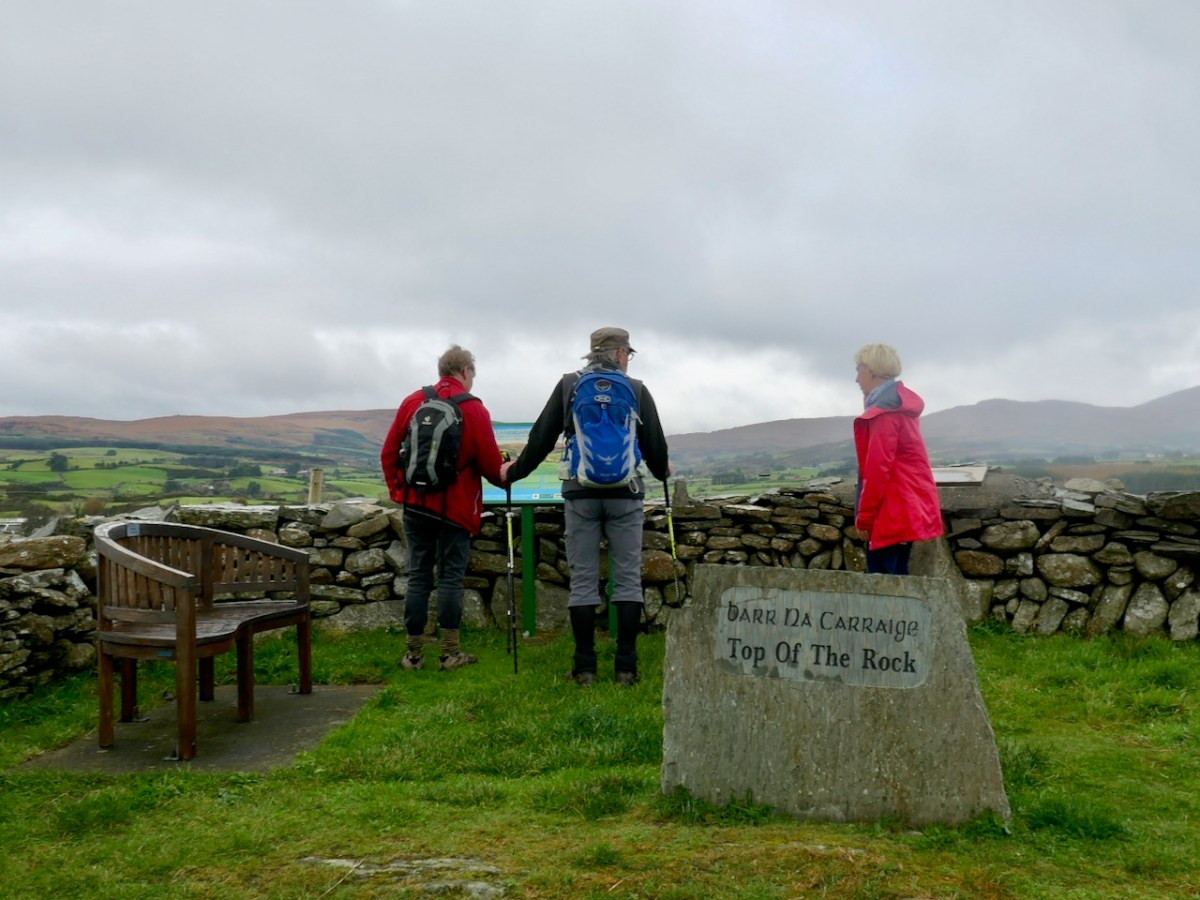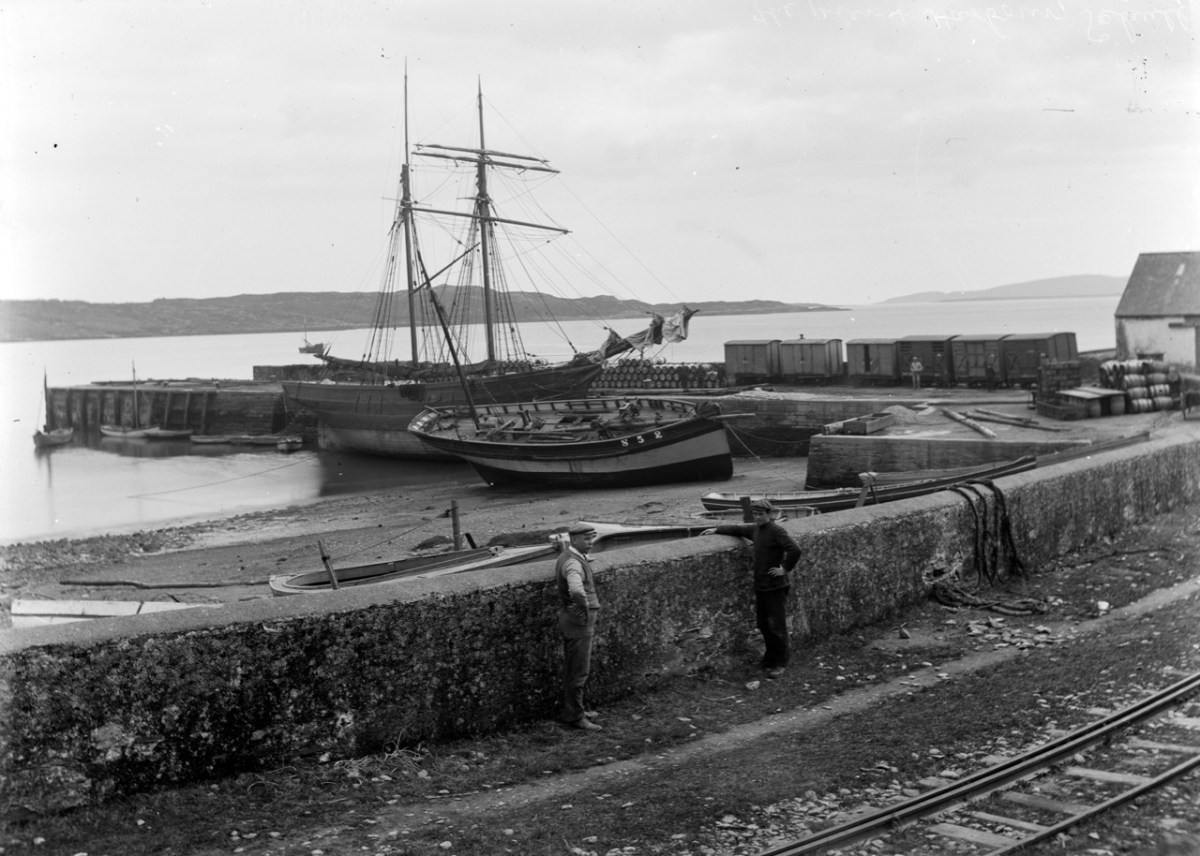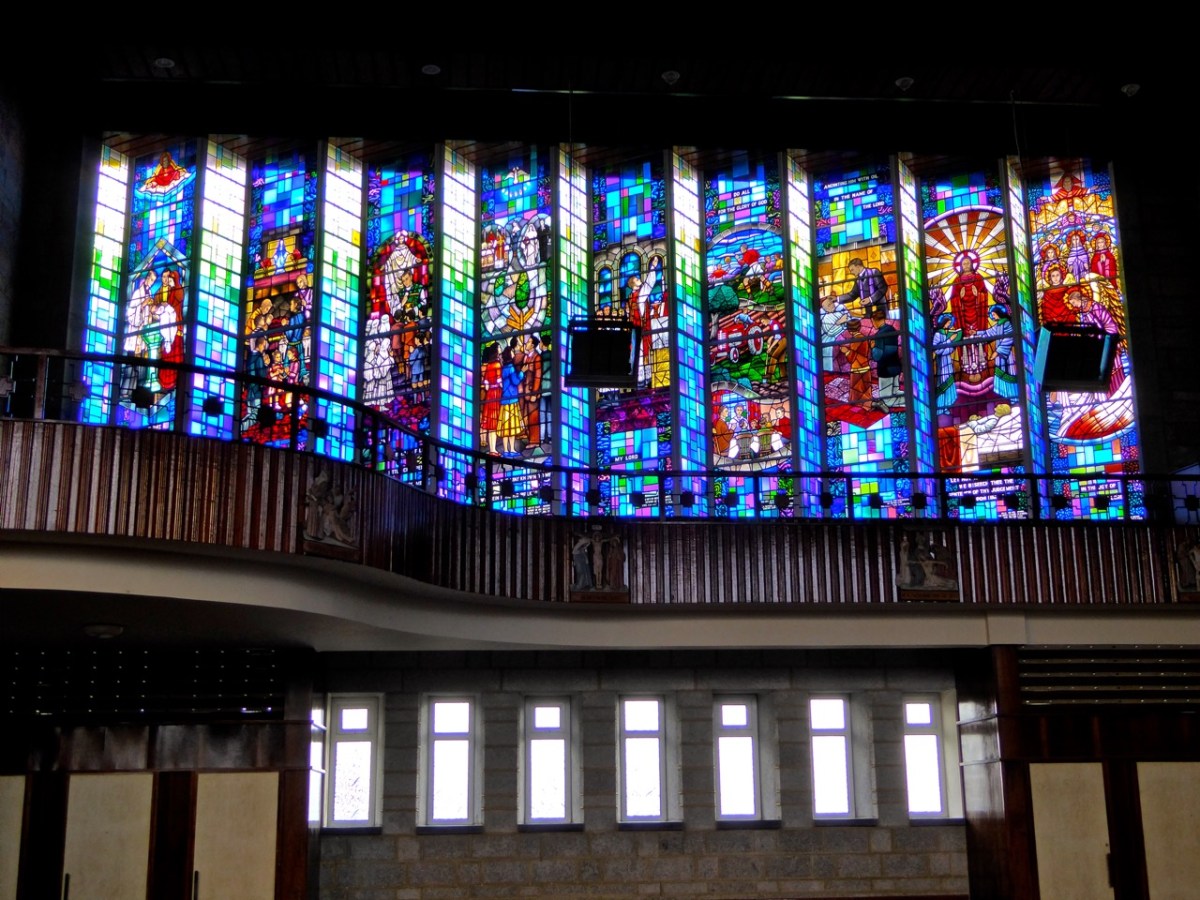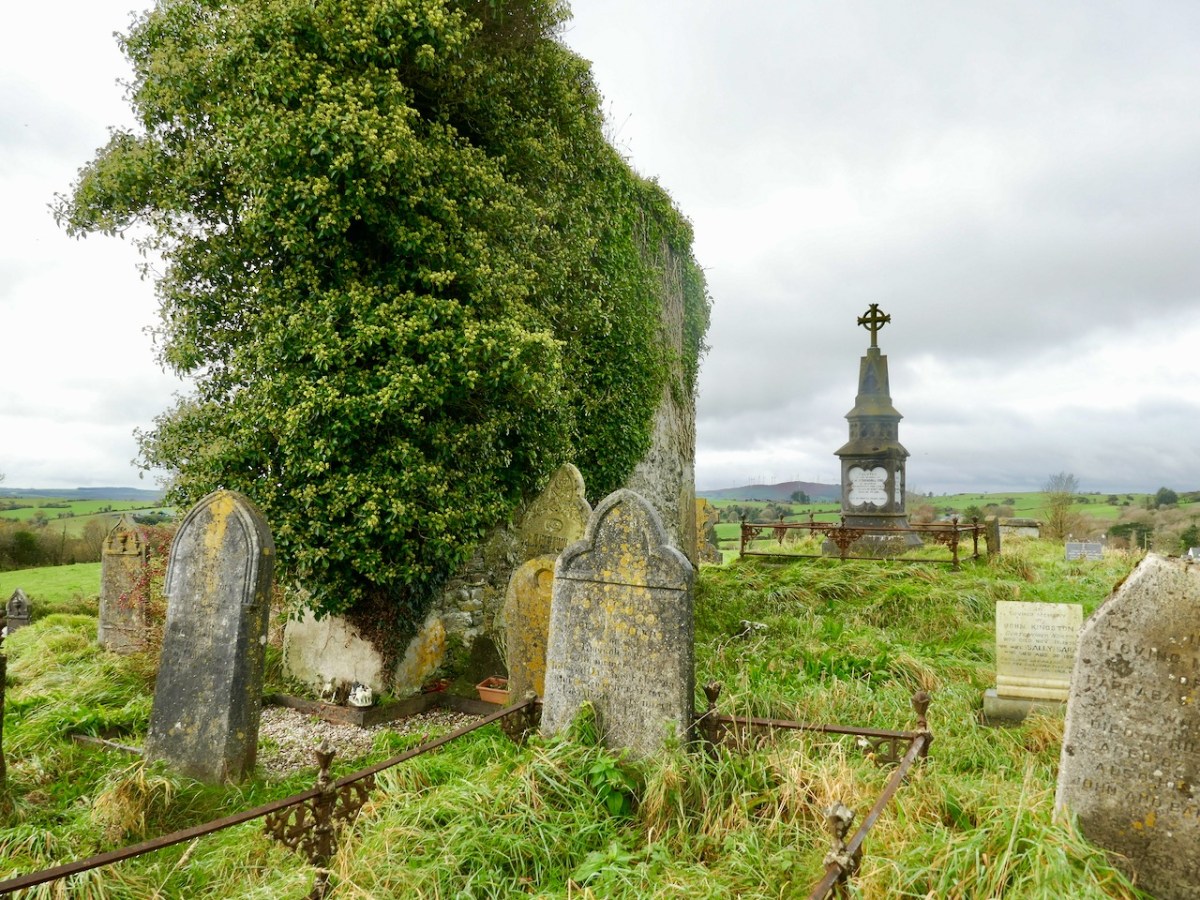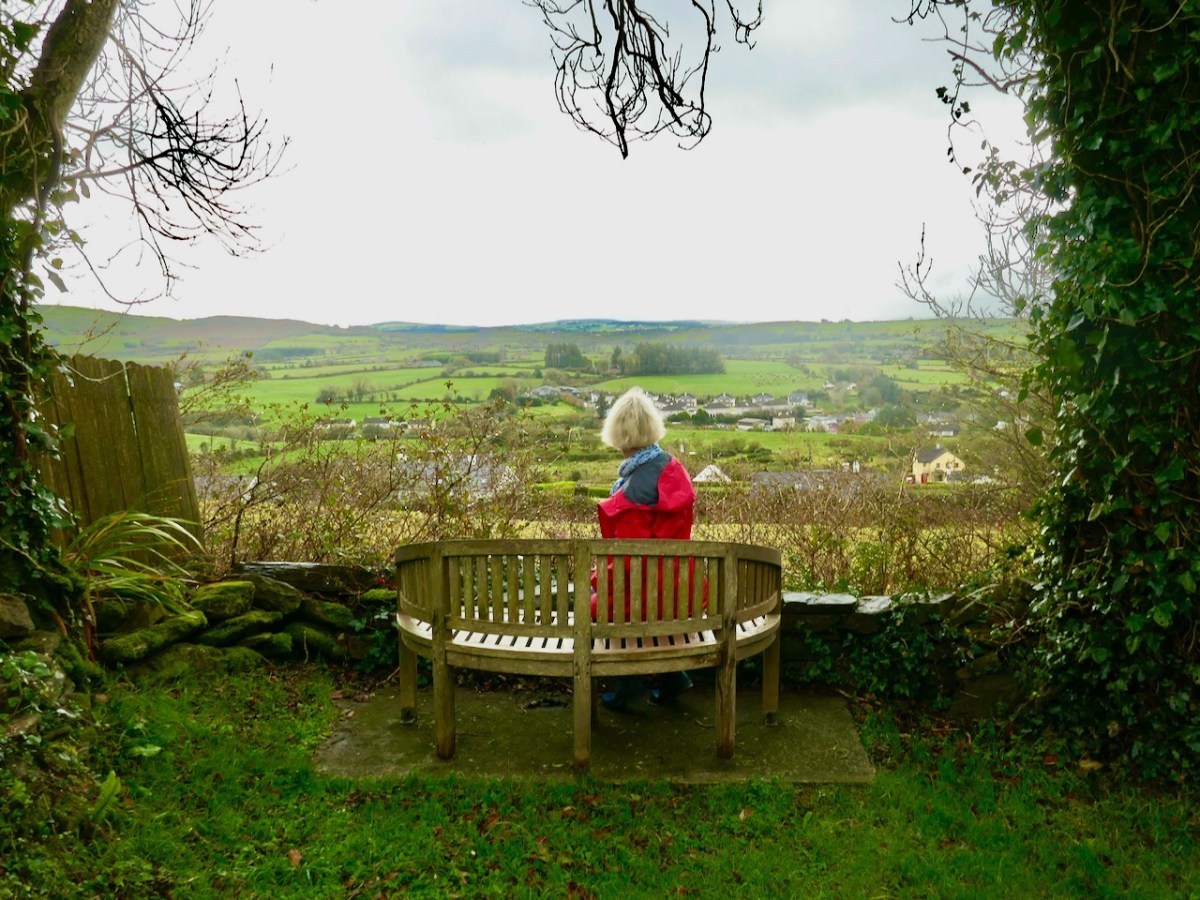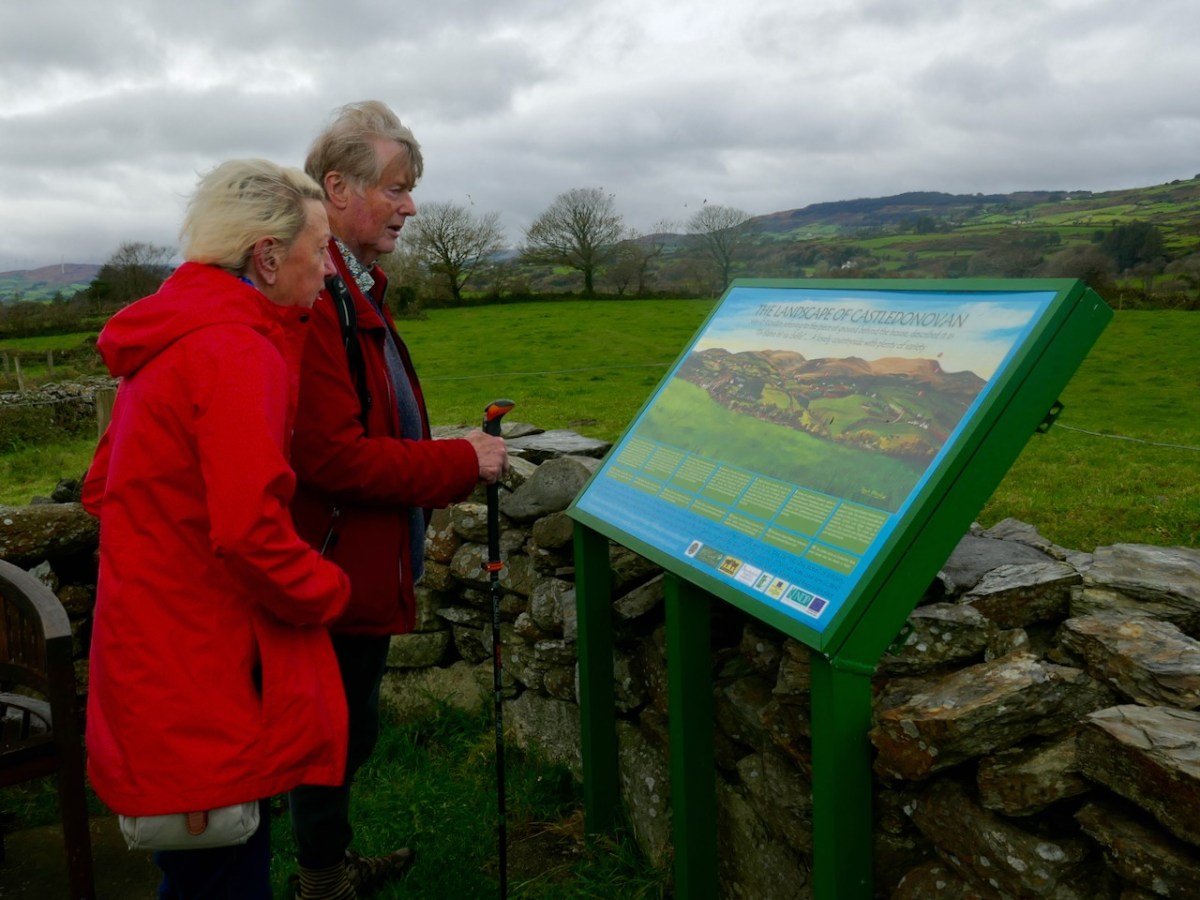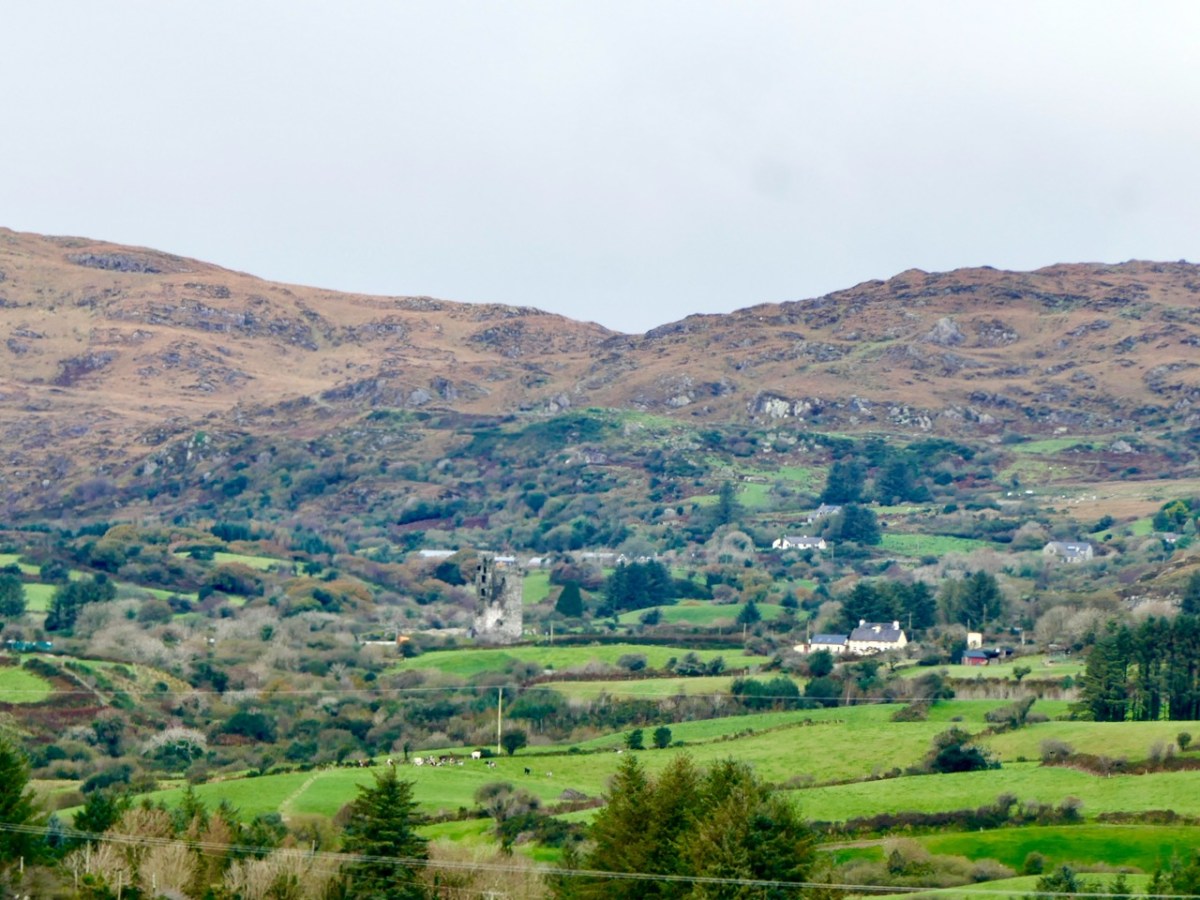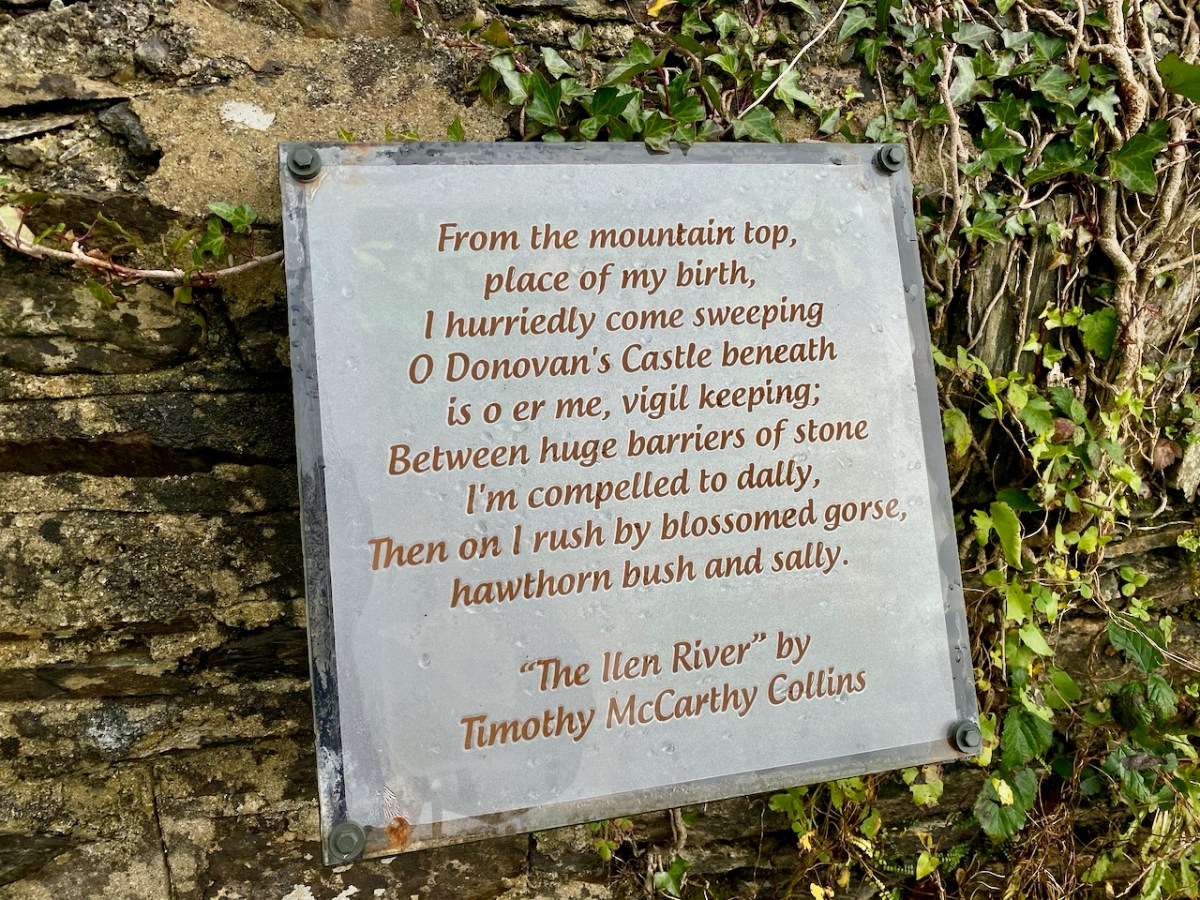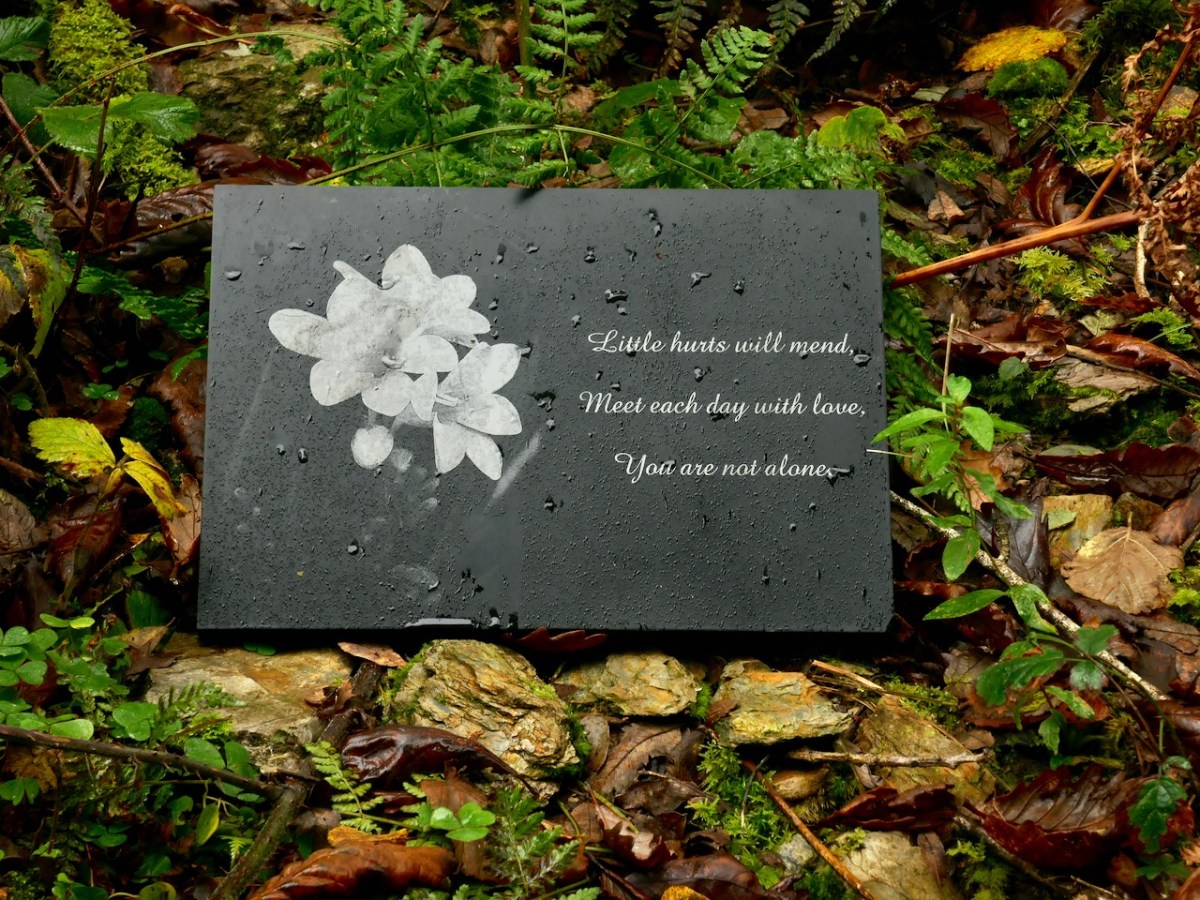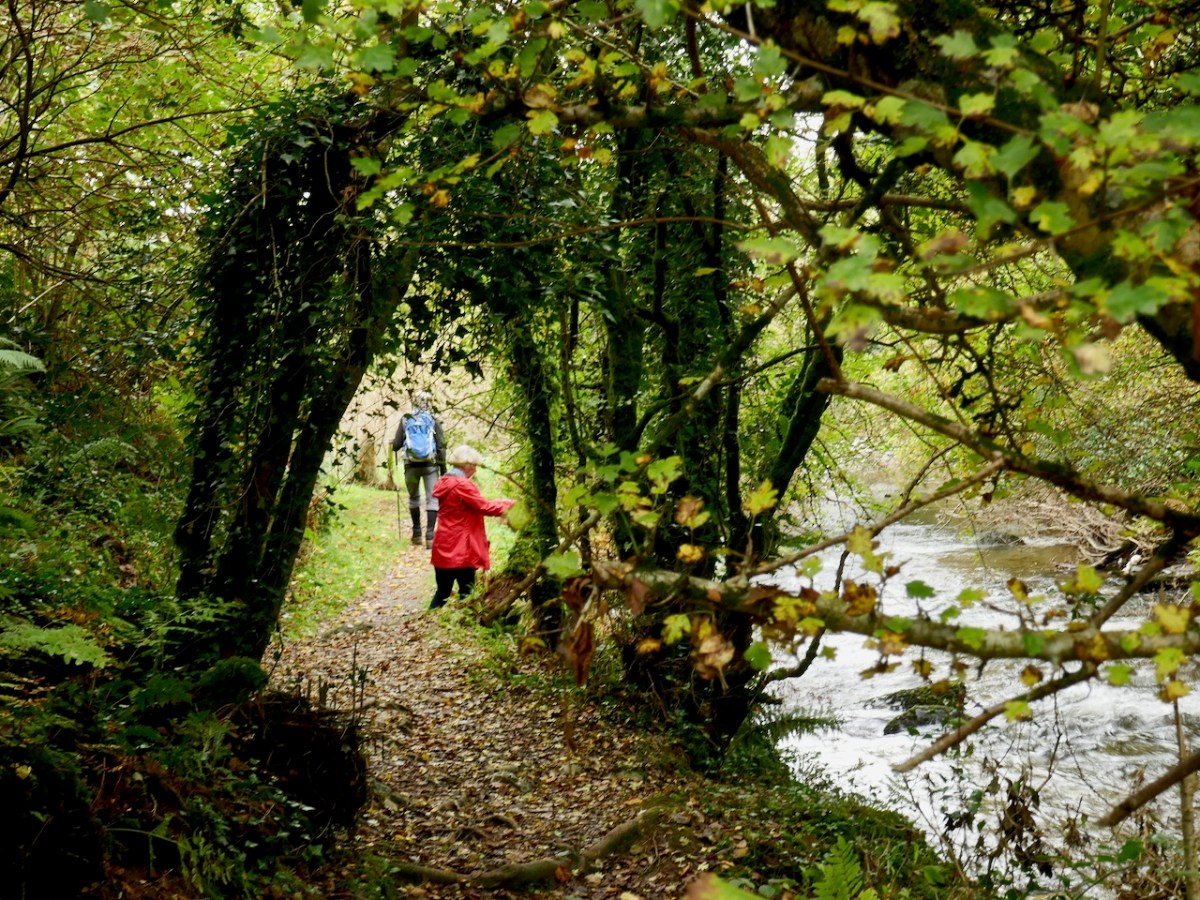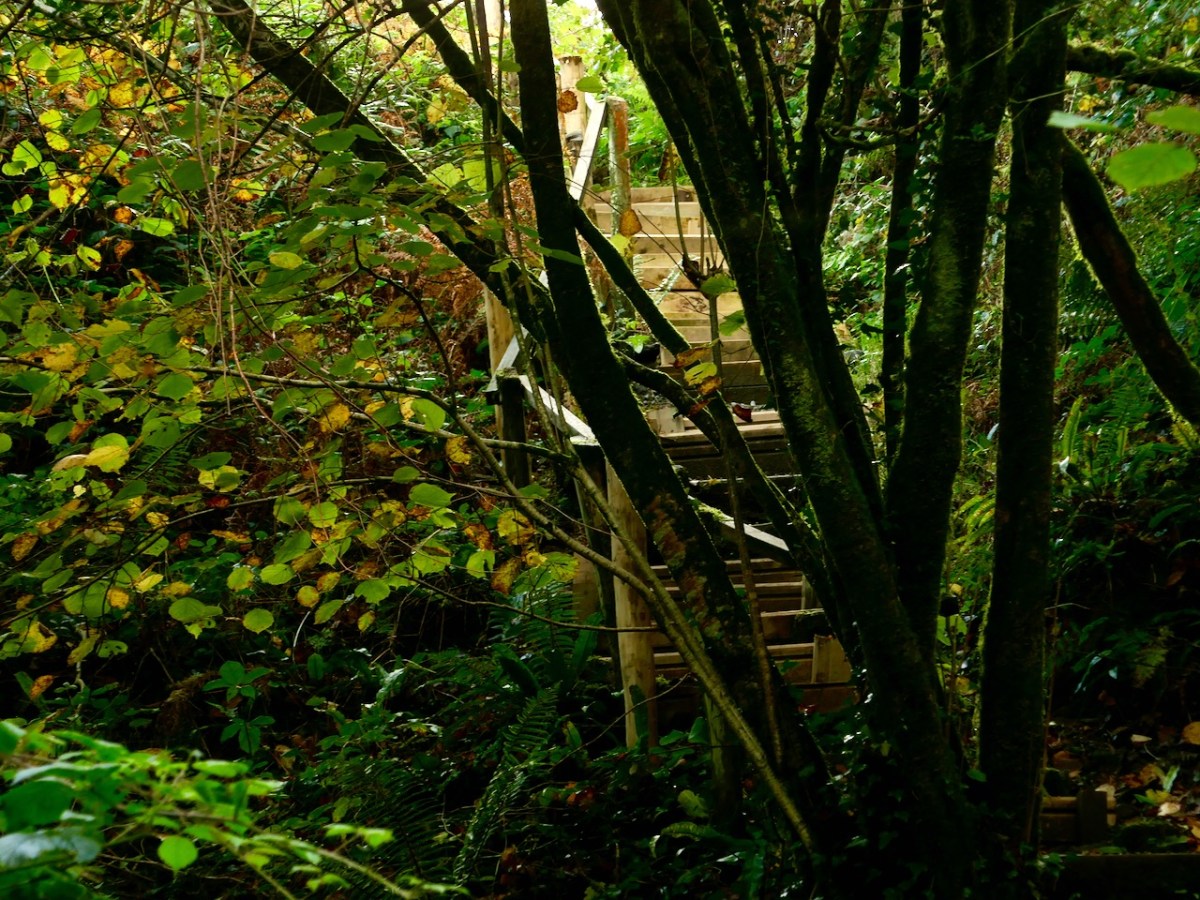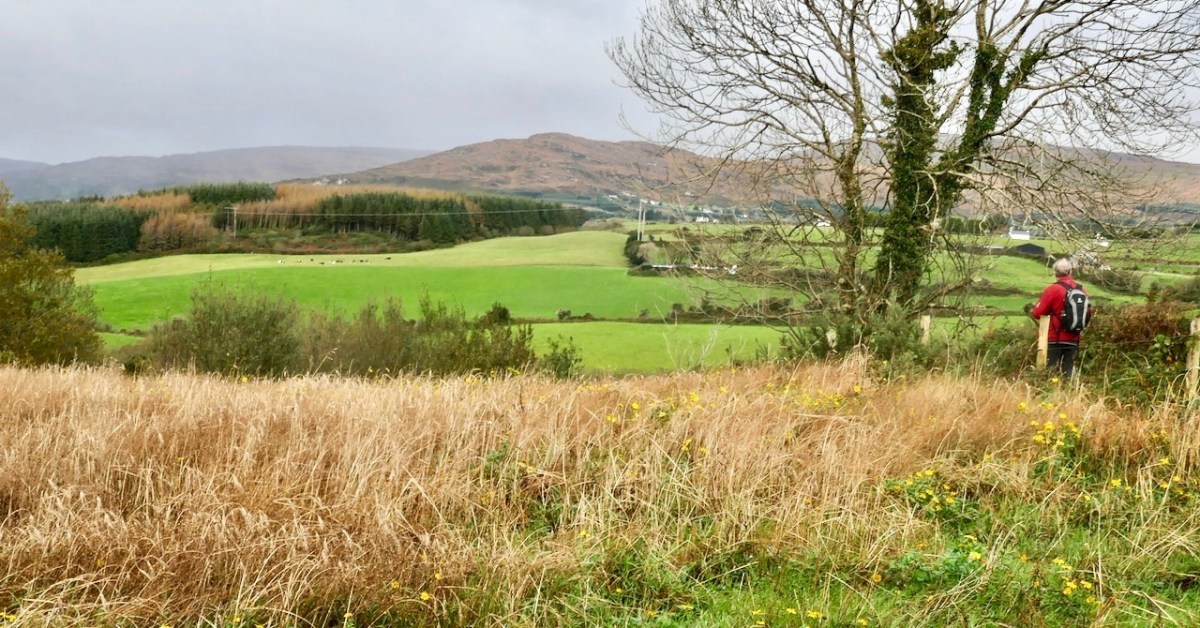This is an update of a post that originally appeared here 7 years ago. We find as time goes by that we need to go back and fix broken links, insert newer ones, update information, and make sure the photographs are still faithful to what’s on the ground. This is a revised and updated version of what I wrote at that time
It was the early 1960s and I was sitting in class in my convent school while Mother Francisca explained the purpose of our education and gave us a glimpse of our futures. “What we want for you, girls,” she said, “is to be Good Wives or Nuns.” This week, I landed back in that classroom with a bang. Did I visit my old school? No – I strayed into a time warp. In doing so I rediscovered part of my heritage I had almost forgotten and I met a brilliant young scholar who helped me access those dim memories again.
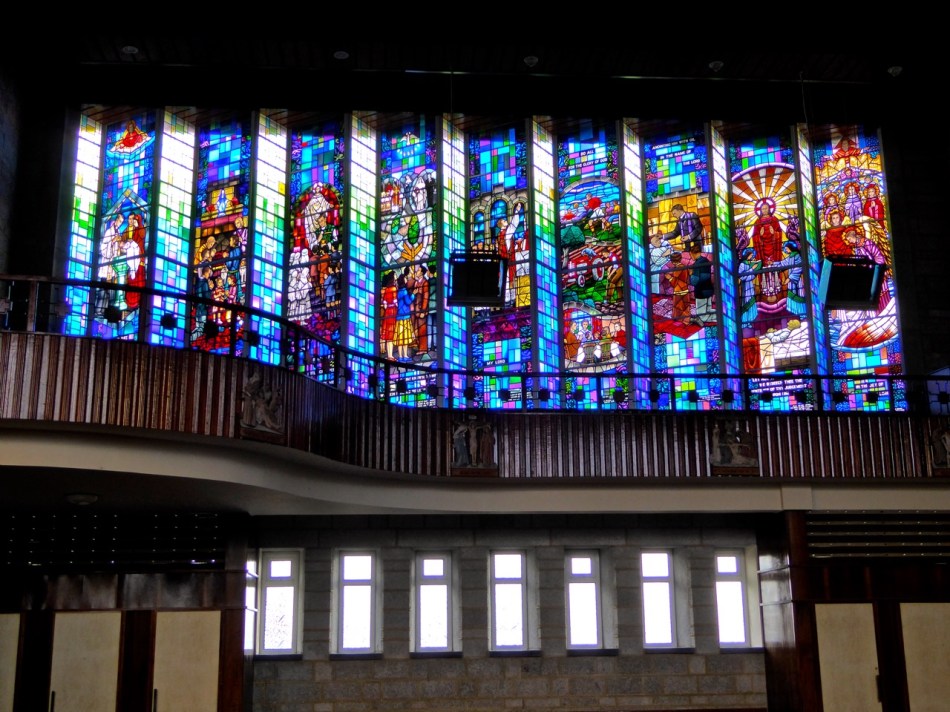

All Saints Catholic Church in Drimoleague is one of the most extraordinary buildings in West Cork. First of all, it’s a fine example of mid-century modern architecture (and there aren’t a lot of those in West Cork) and an engineering triumph. Built in the 1950s of concrete and limestone, its cavernous interior has no need for pillars: nothing intrudes between worshippers and altar. It’s like stepping into an enormous, curiously bright, almost empty box. Secondly, it has extraordinary artwork in the form of a giant mural behind the altar and a panel of stained glass windows above the balcony on the south wall. It was the stained glass that stopped me in my tracks.
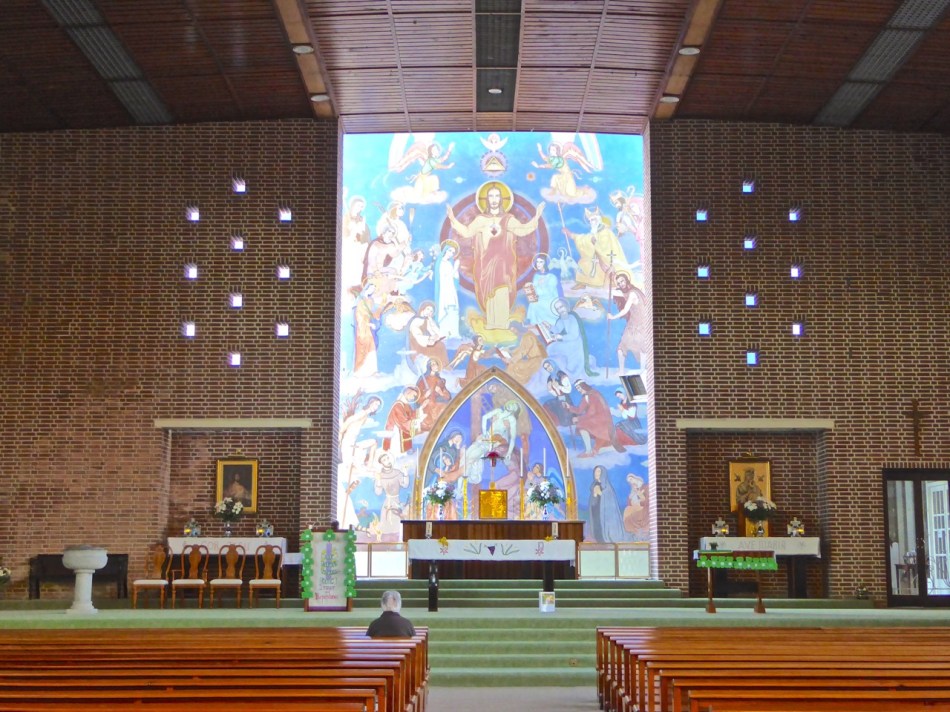
The glass is laid out in a series of frames that takes the viewer from birth to death – no, beyond death, to heaven. The church was built in the 1950s and each frame represents the values of rural Catholic Ireland of that time. In a strange way it reminded me of a High Cross, in that the illustrations that we see on High Crosses were meant to tell a story – a biblical one in that case – and to instruct the viewer in the tenets of the religion. The purpose of this wall of glass was also educational – to provide a primer to mass-goers on the aspirations and actions that should guide their lives.
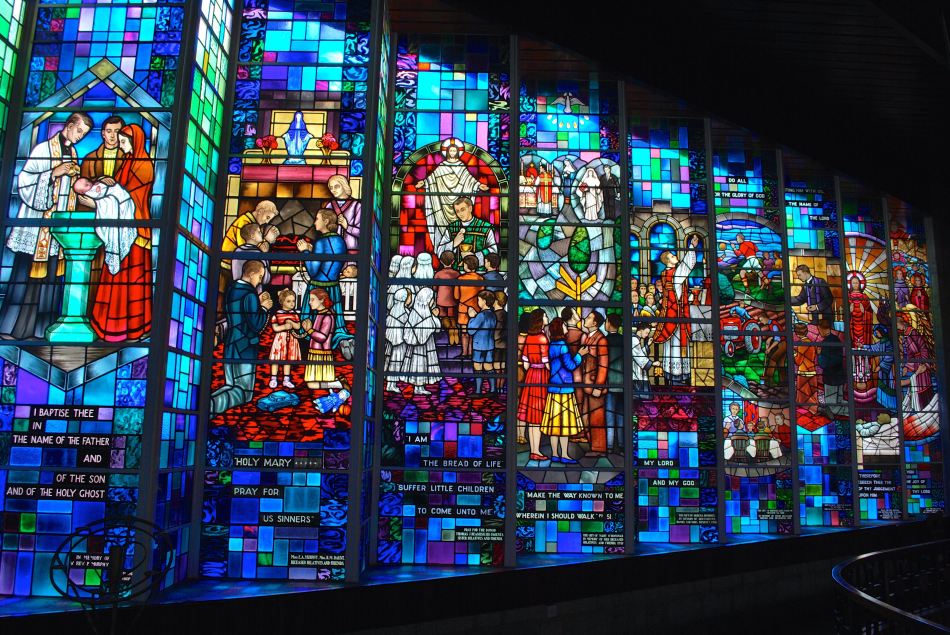
Here’s a better photograph of the panels, courtesy of the brilliant researcher – Richard Butler, now Director of Research at Mary Immaculate College in Limerick.
My parents, imbued with the message that the family that prays together stays together, developed an intermittent enthusiasm for saying the rosary. We would gather in the kitchen after dinner, each with our beads, and kneeling on the hard tiles we would tell off the Sorrowful or the Glorious Mysteries. The second frame shows just such a family, and I particularly love the toys on the floor and the statue of Mary on the mantlepiece. There’s a grandmother and a baby in a cot, and a little girl being inducted into the Mysteries by her older sister.
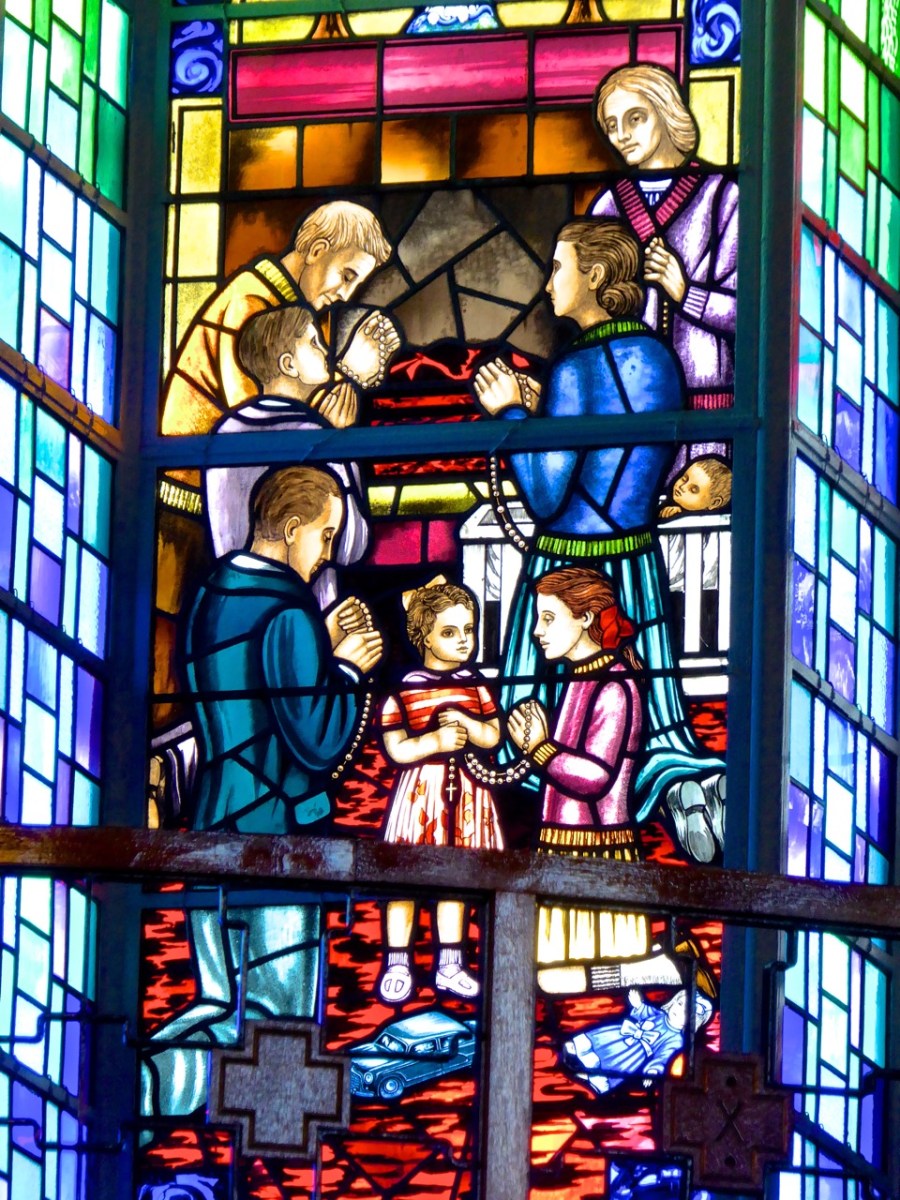
The next frame shows First Communion, with the girls in miniature bride outfits (as they are to this day) and the boys in their Communion suits with the short trousers and knee socks that all boys wore at that time. When my godson in Dublin made his First Communion I heard a lot about the process and I found that apart from the length of the boy’s trousers not a lot had changed in 60 years.

The one that brought me back to Mother Francisca shows earnest young men and women gazing at a directional sign which shows them their choices – marriage or the religious life. That was it! To hammer home the point the top of the panel shows a wedding, a priest and a nun. I’m casting my mind over the group of girls I went to school with – we didn’t produce any nuns and while most of us married I can’t think of a single one who hasn’t worked – we count among us an ambassador, teachers and principals, a town planner, an artist, a college dean, office administrators, a medical doctor, an international expert on child protection, a veterinary nurse, a parliamentary reporter, a lawyer…the list goes on. But none of this was discussed at school: we had no career guidance, no aptitude tests, no encouragement of any kind to think of ourselves as people who would work for a living. What’s curious is that we developed those careers in the complete absence of any kind of conscious preparation for them at the secondary school level.
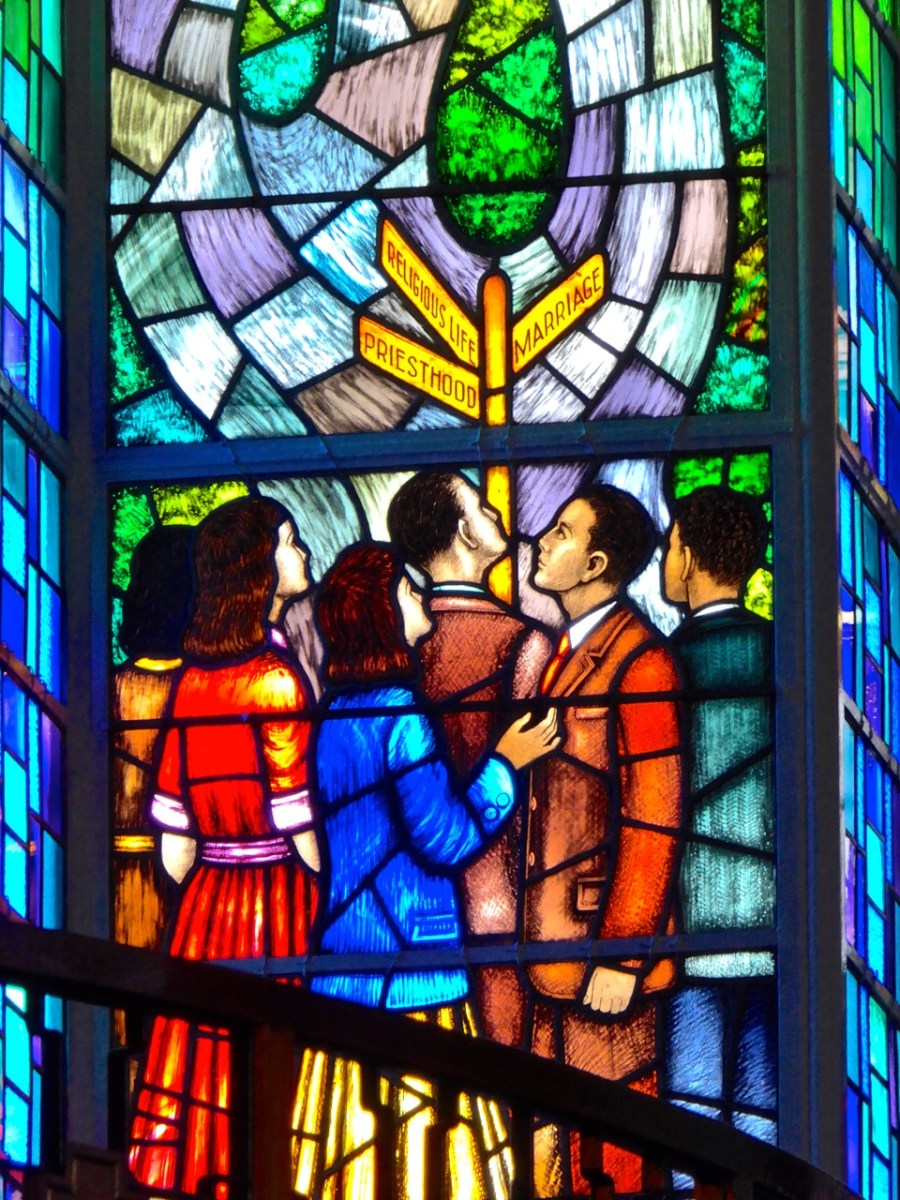
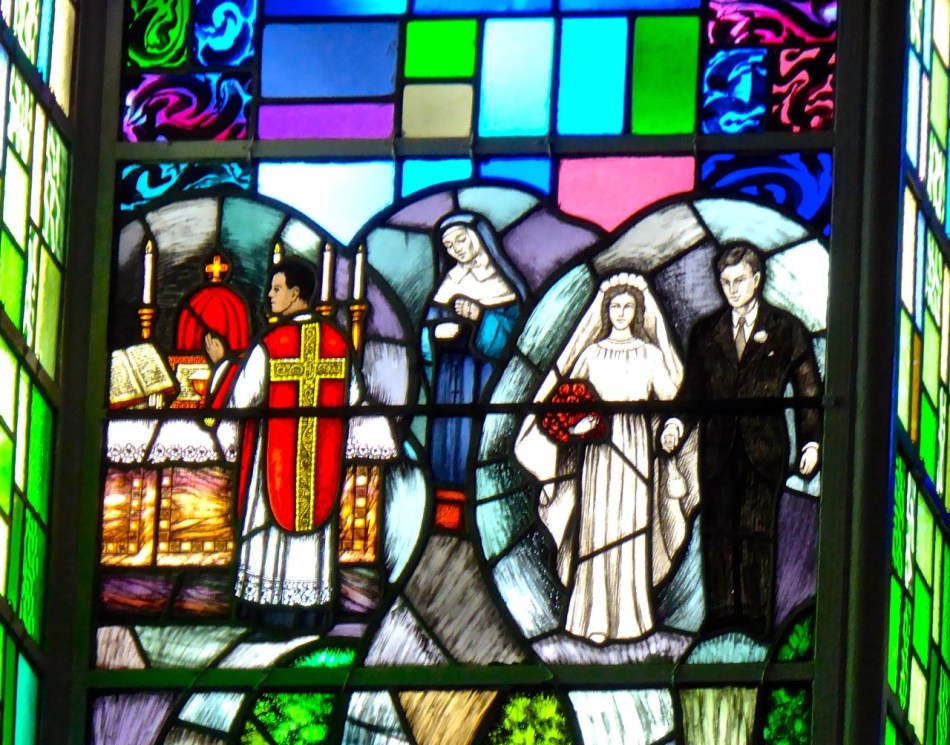
The sixth frame might be my favourite. It’s the ‘work, rest and play’ lesson. At the bottom of the frame a happy family sits around the tea table. Above them men work on the fields and on top those men are playing Gaelic football while their wives sit on a bench on the sidelines and chat to each other. Men were to head the family, work and play hard, and women were to provide the supportive role. I doubt if anyone foresaw when that glass was designed in the 1950s that in the next century two Irish rugby squads – the men AND the women – would bring home the Six Nations Cup for Ireland.
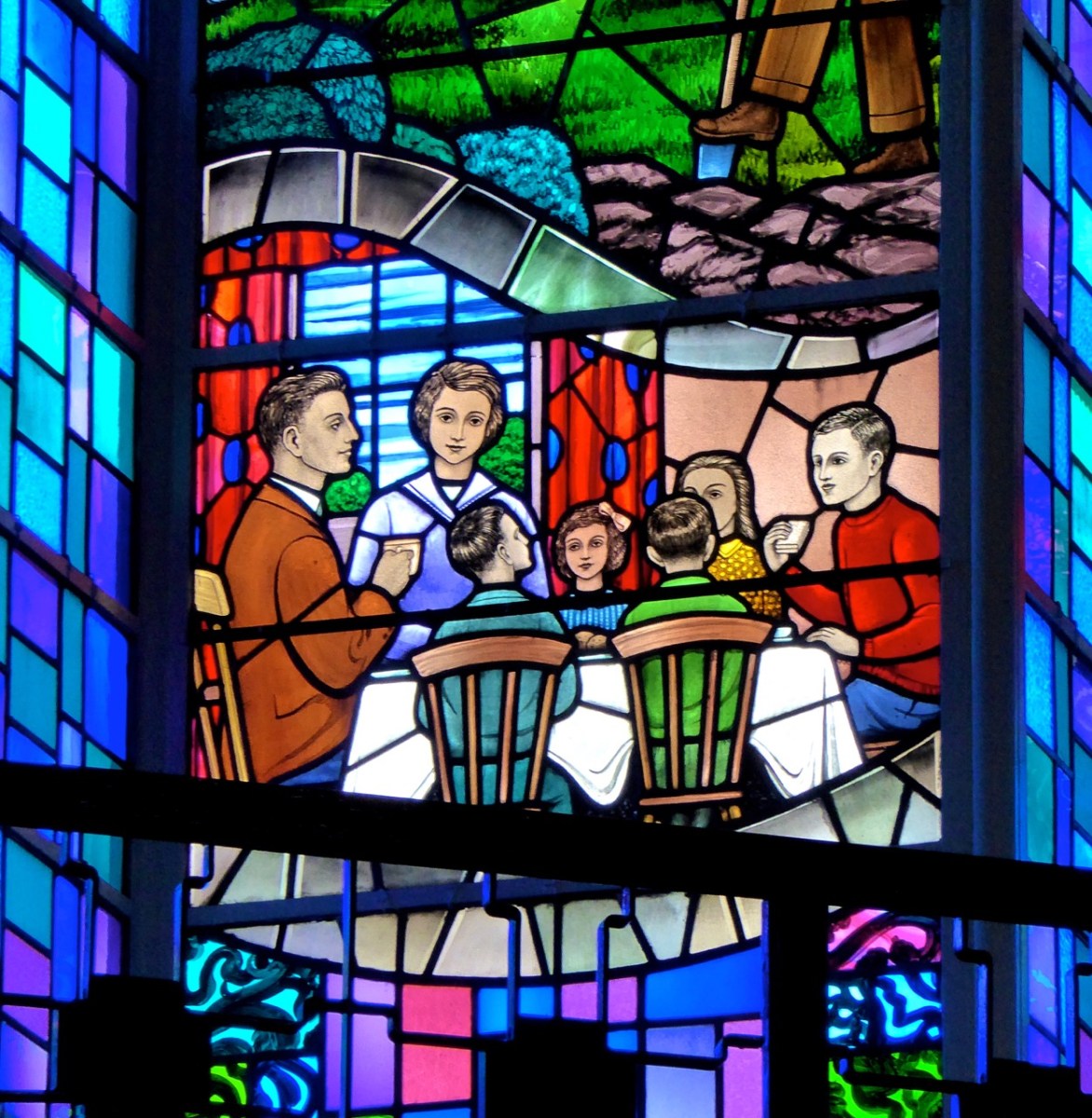
The last three frames deal with end of life, including Last Rights, death, and reception into heaven – the reward for living the exemplary life presented in the stained glass wall.

If you grew up like I did in 1950s Ireland, or if you are interested in the art and architecture or the social history of this period, the Church of All Saints in Drimoleague tells a fascinating story. In 2015 when I originally wrote this post there was little information available about it. Now I know that the church was designed by Frank Murphy, ‘Cork’s Modern Architect’, thanks to the sterling work by yet another brilliant young scholar, the architect Conor English. We attended Conor’s talk about Murphy at Nano Nagle place some years ago (that’s him on the right, along with Peter Murphy, Frank’s son) . You can read more about Frank Murphy and his achievements in this article.
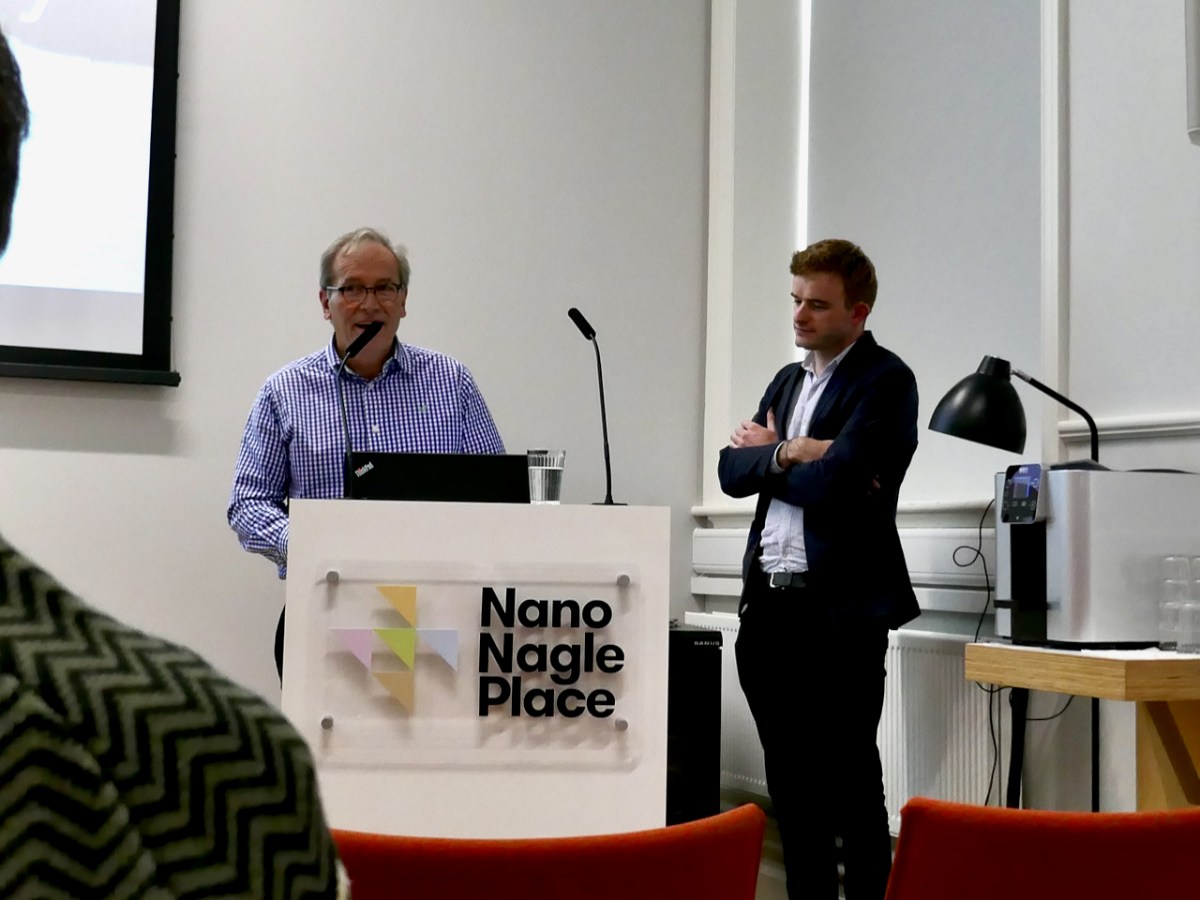
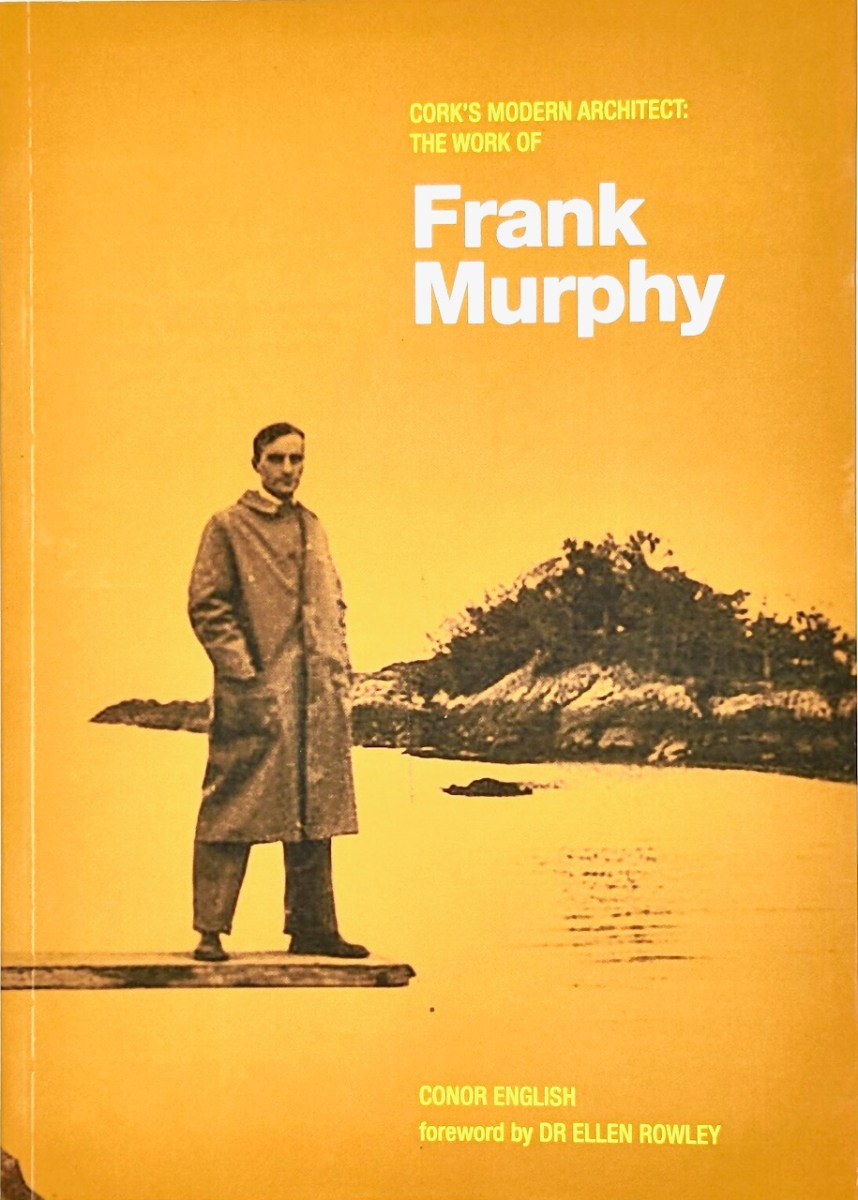
My research revealed that one other person was as struck as I was by this church, although in a more scholarly way. Richard Butler is a gifted young historian from Bantry who completed a doctorate at the University of Cambridge. At the time I wrote this blog post, Richard was teaching at Leicester University, but is now the Director of Research at Mary Immaculate College in Limerick. We first heard him speak at the Bantry Historical Society on the subject of the courthouses of West Cork – a topic we had no idea could be as interesting until we heard his erudite and engaging presentation. Now, he has written the definitive book on Irish Courthouses.

At that time, he had written a paper, All Saints, Drimoleague, and Catholic visual culture under Bishop Cornelius Lucey in Cork, 1952-9, for the Journal of the Cork Historical and Archaeological Society*. He was very generous in sharing his findings with a fellow enthusiast. His paper (and a subsequent one with more information**) deals with the Catholic ethos within which that era of church construction operated, with the role of the local community in commissioning such an unusual edifice, with the enormous mural, and with the windows. It was only after communicating with Richard that I learned that the windows were the work of the Harry Clarke Studios*** and how unusual they were for their day in not being concerned solely with images of saints, the life of Christ, or Mary.
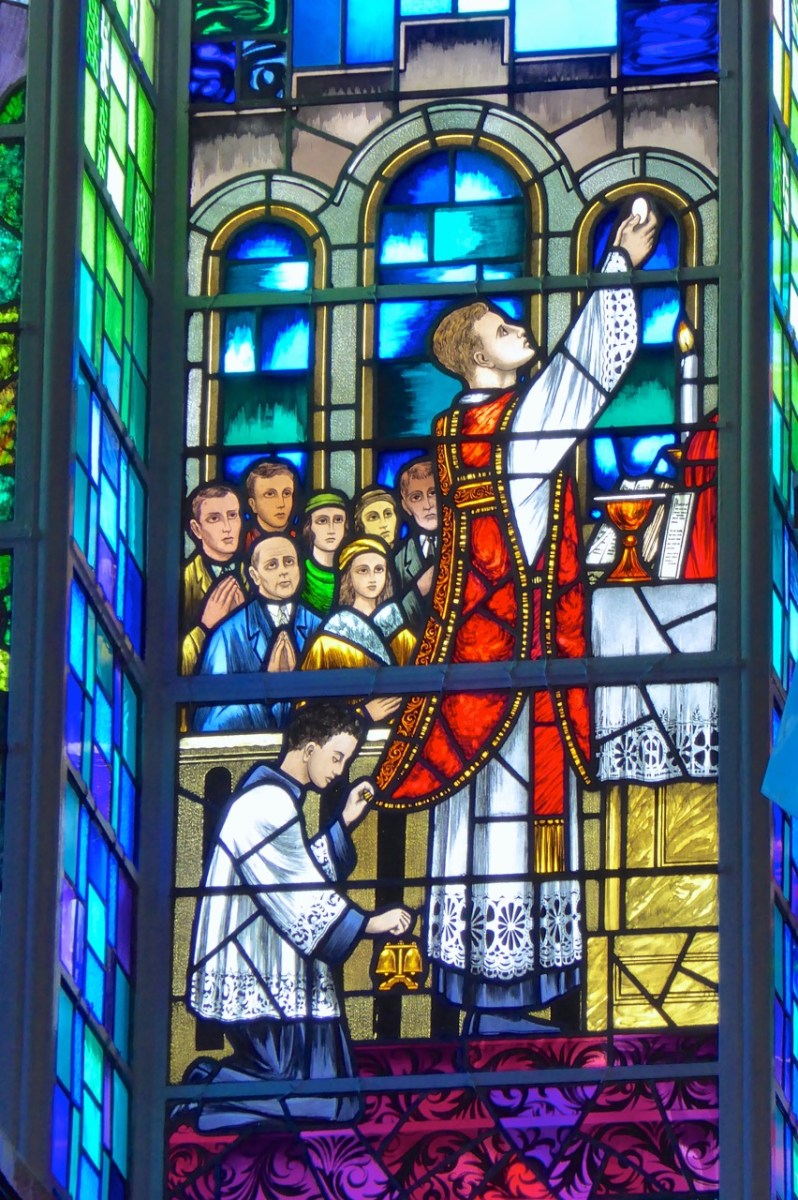
Richard’s paper not only details the commissioning of the windows, but the extraordinary interventions made by Bishop Lucey to dictate the content and form of the figures in them. It’s a fascinating read.
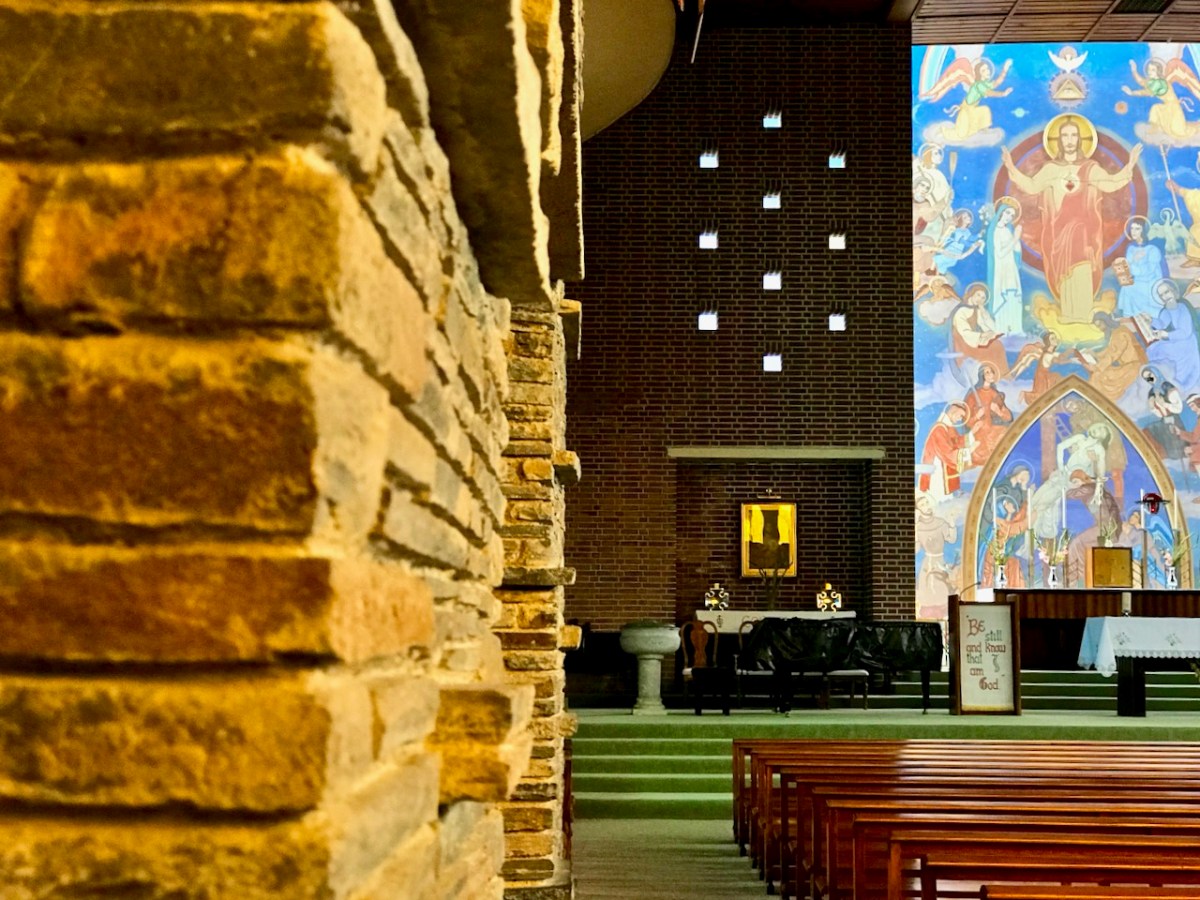
We have discovered, to our surprise, that not everyone is as enamoured of the Drimoleague Church as we are – the word ‘factory’ has been bandied about. Personally, I think Drimoleague should take great pride in having such an outstanding and unique building, by such a distinguished architect. There’s more to the story – all to be read in Richard’s papers.
*Richard Butler, ‘All Saints, Drimoleague, and Catholic visual culture under Bishop Cornelius Lucey in Cork, 1952-9’, Journal of the Cork Historical and Archaeological Society 120 (2015), pp. 79-97.
**Richard Butler, ‘All Saints, Drimoleague: clarifications and new discoveries’, Journal of the Cork Historical and Archaeological Society 121 (2016), pp. 141-43.
***For a discussion of the difference between Harry Clarke windows and Harry Clarke Studio windows, see my quiz on this topic and the answers.
